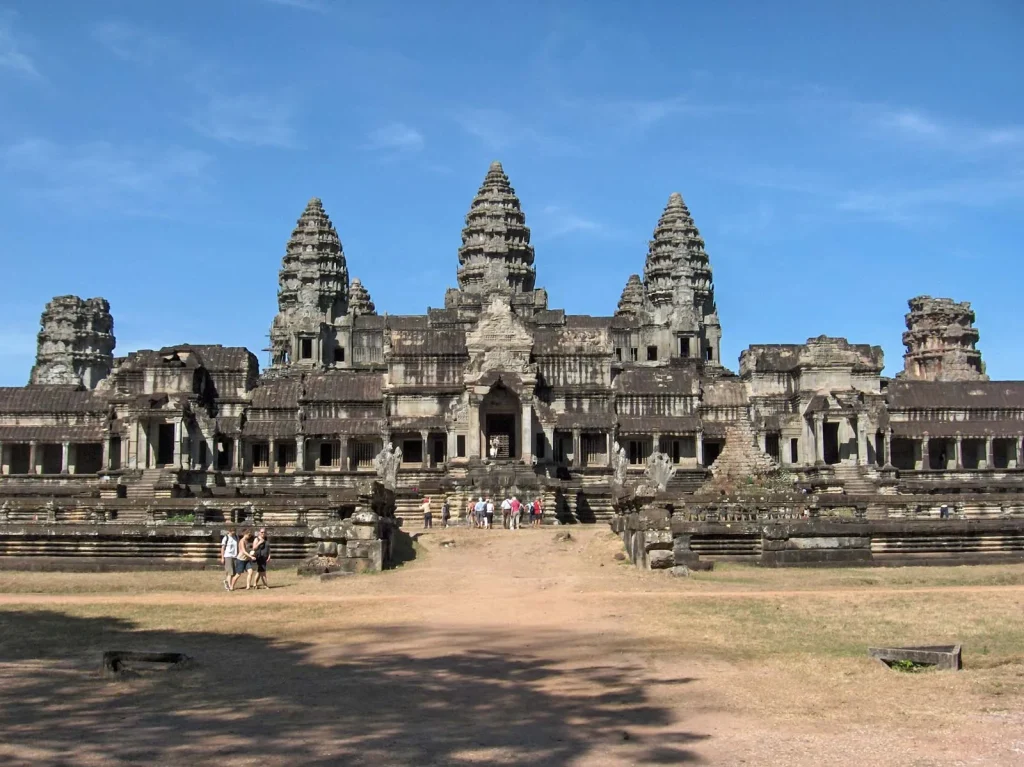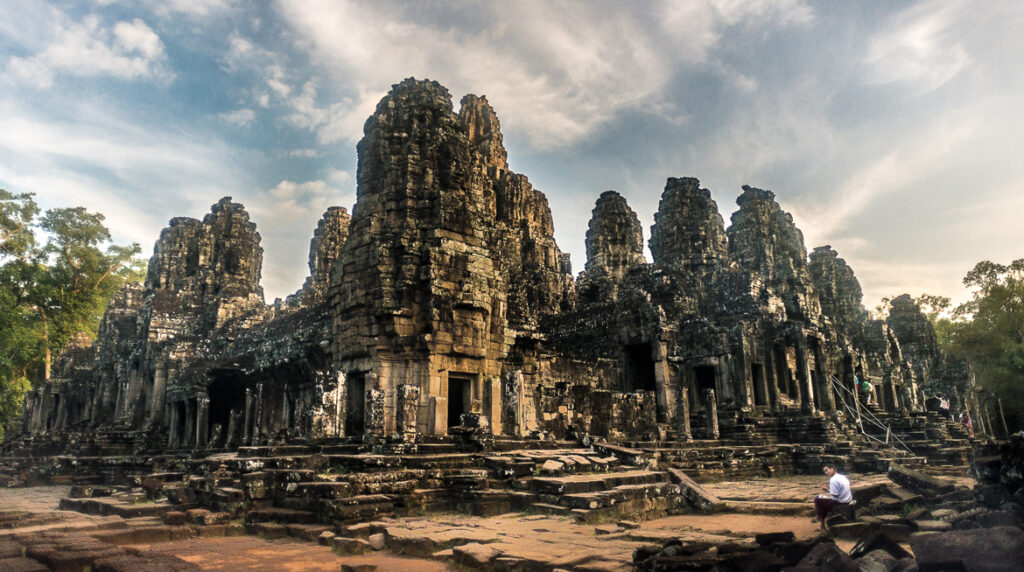Published
8 months agoon

Angkor Wat, a temple nestled in the heart of Cambodia, has surpassed Pompeii in Italy to become the eighth wonder of the world. Recipients of the title of Eighth Wonder of the World are exceptional structures or undertakings, and Angkor Wat is one of them.
Historical Background
Angkor Wat, which literally means “city of temples,” is the world’s largest religious structure. It was created in the 12th century and is now regarded as one of the most outstanding architectural marvels in the world. This once-lost metropolis, shrouded in history and mystery, has 1000 archaeological sites and occupies an area of 170 square miles.
Constructed by King Suryavarman II, Angkor Wat was once a Hindu temple devoted to Vishnu before becoming a Buddhist shrine. Its walls are covered in elaborate carvings that narrate tales from Buddhist and Hindu mythology.
The eighth Wonder of the World, Angkor Wat, has displaced Pompeii as the most well-known location on Earth. Almost 500 acres are devoted to this enormous holy structure, which is also a UNESCO World Heritage Site.
The Heart of the Temple

The great temple complex, a dazzling masterpiece of Khmer construction, sits at the core of Angkor Wat. The complex, which is surrounded by galleries and courtyards, contains five high towers, each representing a peak of Mount Meru, the sacred mountain in Hindu and Buddhist mythology. The central tower, which stands 65 meters (213 ft) tall, dominates the skyline and represents the temple’s spiritual significance.
The walls of Angkor Wat are adorned with an extensive collection of bas-reliefs, depicting scenes from Hindu mythology, historical events, and daily life during the Khmer Empire. These carvings provide a fascinating glimpse into the beliefs, values, and customs of the Khmer people. The bas-reliefs are not merely decorative; they serve as a narrative, telling stories that have been passed down through generations.
A Destination for the Soul
Every year, thousands of tourists from all over the world come to this location, which is the largest religious monument in the entire globe. Originally constructed as a Hindu temple to Lord Vishnu, by Khmer Emperor Suryavarman II, his successor, Jayavarman VII, who also built the neighboring famous Buddhist temple of Bayon, developed it into a prominent Buddhist temple. Angkor is especially well-known for its eight-armed Vishnu statue, which the people of the area see as their guardian deity.
Five lotus-shaped towers that exhibit symmetry and symbolize a sacred mountain in Buddhist and Hindu traditions are located in the center of the temple. Its walls are adorned with intricate carvings that tell historical Hindu and Buddhist tales. Angkor Wat is also the world’s largest religious edifice, according to the Guinness Book of World Records.

As you approach Angkor Wat, you are greeted by a moat that stretches for over 5 kilometers (3 miles), creating a sense of anticipation and grandeur. Crossing the moat, you arrive at the main entrance, where a towering gopura (gateway) adorned with intricate carvings welcomes you into the temple complex.
Its wall carvings, which depict scenes from Hindu legends, historical occurrences, and everyday life in the Khmer region, are reminiscent of an old picture book. The meticulous attention to detail demonstrates the mastery of the artisans behind this enormous endeavor. One intriguing detail about Angkor Wat is that it is also known as Yasodharapura.
Hindu and Buddhist roots
In addition to its remarkable architecture, Angkor Wat has great cultural and spiritual significance. Monks and followers of Buddhism gather there for prayer and meditation, and it is a bustling site of worship. The temple complex exudes an aura of tranquility and serenity, making it an ideal place for reflection and contemplation. Visitors from around the globe come to Angkor Wat not only to marvel at its architectural splendor but also to connect with the rich history and spirituality of Cambodia.
Watching the sunrise above Angkor Wat’s towers, which creates a breathtaking vision with colors like pink, orange, and gold, is the greatest way to enjoy the site. Beyond just being stunning, Angkor Wat represents the rich history of Cambodia and invites visitors to learn more about its blend of Buddhist and Hindu ancestry. The best time to visit Angkor Wat is during the dry season, from November to March, when the weather is pleasant and humidity is low.
The title “Eighth Wonder of the World” is not officially acknowledged by any relevant international agency. Instead, it’s frequently used colloquially to refer to a variety of outstanding buildings, structures, or natural wonders that captivate people all around the world. Aside from the famous Seven Wonders of the Ancient World, there is no definite and universally agreed-upon list of wonders.


Paris 2024 Olympics: 5 of the most stylish uniforms on show


FM showers special love on Bihar and Andhra Pradesh in Budget 2024, as Opposition leaders cry “Kursi Bachao”


DreameIndia Appoints Manu Sharma as Managing Director to lead its India Operations and Market Expansion


Amazon eyes Swiggy Instamart to boost Quick Commerce in India


Economic Survey urges creation of 78.51 Lakh non-farm jobs annually


Explained: The significance of Savan in India

